In the B2B marketing landscape, content distribution holds the key to unlocking the full potential of your content. Content marketing does not stop with the creation of a great piece of content, but making sure that it reaches the right audience.
Do you know how much content is out on the internet? Google processes nearly 40,000 queries every second and 46,740 Instagram posts per minute. It’s important to remember that there is so much noise in the digital landscape and to stand out, you need to consistently create and distribute quality content. An effective B2B content distribution strategy makes use of social media, organic search, email, and paid channels to reach its target audience.
In this article, we will explore various B2B content distribution channels and how to measure the effectiveness of your content distribution strategies.
How to Distribute Your Content
To maximize the reach and impact of your content, it’s essential to have a strong content distribution strategy in place. Effective distribution of your content can ensure that it reaches the right audience, engages, and convert them.
Social Media
LinkedIn is inarguably the predominant B2B content distribution channel. It stands out as the principal channel for B2B marketing leads from social media capturing an impressive 80% in total.
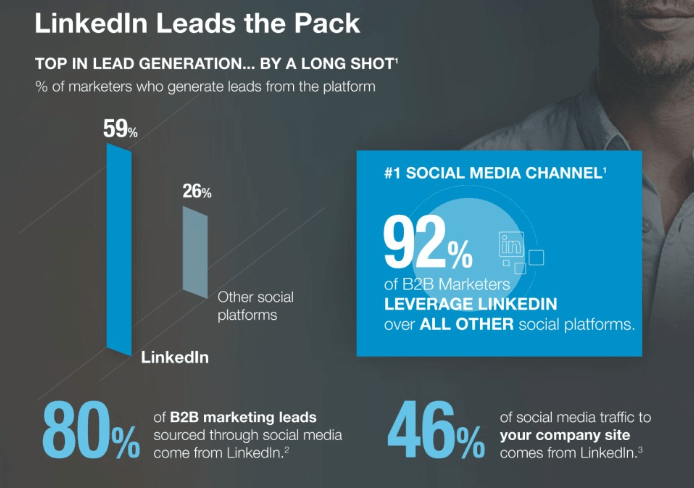
What makes LinkedIn the perfect platform for B2B marketing is that the audience wants to read B2B content, unlike people on Instagram, TikTok, or Pinterest. There are many ways to use LinkedIn for B2B content marketing including social posting, targeted audience, LinkedIn groups, campaigns, and lead generation. Adding original and relevant content in your posts helps LinkedIn consider the post “native content” even if it includes an external link. You can also post content in LinkedIn groups to reach targeted audiences that are interested in reading your content.
On the other hand, LinkedIn offers a ton of paid marketing options. For example, the matched audience feature allows businesses to target audiences based on their own customer data and LinkedIn’s professional data. Targeting helps you create a better and richer marketing strategy. The matched audience expands further to Retargeting, Account Targeting Contact Targeting, and Lookalike Targeting.
If you want to go a step further, then consider a LinkedIn campaign to get your content to your target audience. LinkedIn offers a variety of campaign formats to effectively distribute your content such as sponsored content (native ads in the LinkedIn feed), sponsored InMail (personalized messages sent to targeted users), display ads, or dynamic ads. Pick a format that works best for your content and objectives. Craft great content and pair it with interesting illustrations to leave a lasting impression.
Finally, posting the best of the best content is fruitless if you don’t grow your network. LinkedIn offers a fertile ground for networking and a large network means your content reaches a larger audience. Even so, posting content is only the first step. Start conversations by commenting on other relevant posts too. It helps build a reputation and strengthens your credibility amongst other professionals in the field.
Facebook is another great platform to distribute your B2B content. We’ve all seen boosted posts on Facebook from various businesses. However, it can be super tricky to target B2B buyers using Facebook interest targeting as it’s largely based on demographics and interests.
That’s where Facebook Ad retargeting comes in. It targets people who have interacted with your brand or visited your website recently (in the last 30 days). That way, you know for sure that they are your target audience. Additionally, it doesn’t cost an arm and a leg to reach your target audience.
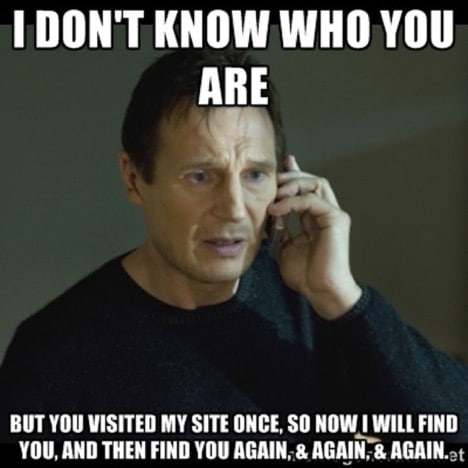
Facebook groups are also a great way to reach and engage your target audience without spending any money. All you need to do is to join relevant groups, observe and build relations, and then share content to spark discussion. Posting on Facebook doesn’t cost a thing but requires considerable time and effort.
The life span of a tweet is very short with nearly 500 million tweets tweeted every day. However, Twitter is the platform of choice to discuss trending news, which makes it a good fit for B2B content. On the other hand, Twitter only has about 353 million active users, but Twitter users tend to be more engaged and focused.
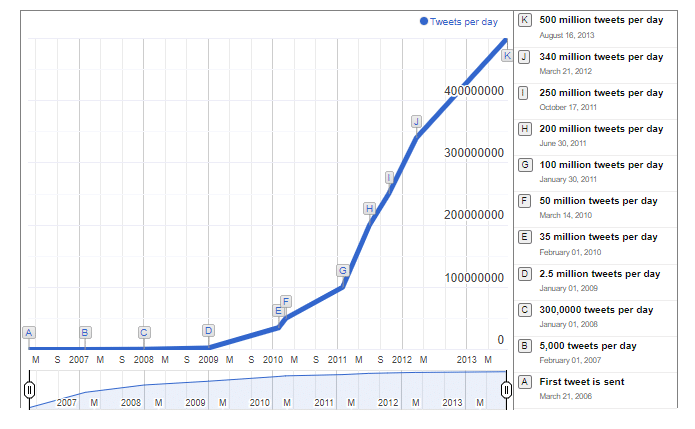
Audience targeting and retargeting on Twitter works similarly to Facebook audience targeting and retargeting. It allows advertisers to define certain parameters to reach their target audience on Twitter. Twitter also offers a retargeting feature that allows B2B marketers to reach users who have previously interacted with their brand or website.
Twitter is especially great for B2B marketers working with tech-related content. People on Twitter love talk numbers and data-driven tweets are a great way to engage them. So, while posting your content on Twitter, pick some facts and data and post it with your content link to grab customer attention.
Quora and Reddit
Quora and Reddit are two slightly controversial platforms. However, they’re not just a great place to find answers but also to distribute B2B content. These sites are great places to reach niche audiences and market original content.
Here’s a little tip for B2B marketers! Both Quora and Reddit have their own unique community and dynamics and must be used accordingly. Generally, Reddit is considered best for product and service promotion, while Quora is a good place to build brand authority.
The best part about Quora and Reddit is that both websites rank high on Google due to their comprehensive and concise answers to a broad range of questions. Lastly, it’s important to remember that too much self-promotion is a definite no-no. If you end up getting banned or flagged, then you will lose hundreds of millions of potential readers. So, make sure that your content brings value to the reader while promoting your brand.
Podcasts
While you may be thinking about what podcasts have to do with content distribution, they’re an excellent way to reach a specific set of audiences who like to listen. While most of these people don’t have the time to read your content, they’re generally willing to listen to a compelling dialogue.
Podcasts have gained popularity as a convenient way for busy business leaders and entrepreneurs to consume auditory content.
According to a survey of over 2,700 LinkedIn members worldwide, over a third of them listen to podcasts. In fact, the engagement level increased significantly with seniority with nearly 44% of the department heads, VPs, owners, and C-suites listening to podcasts.
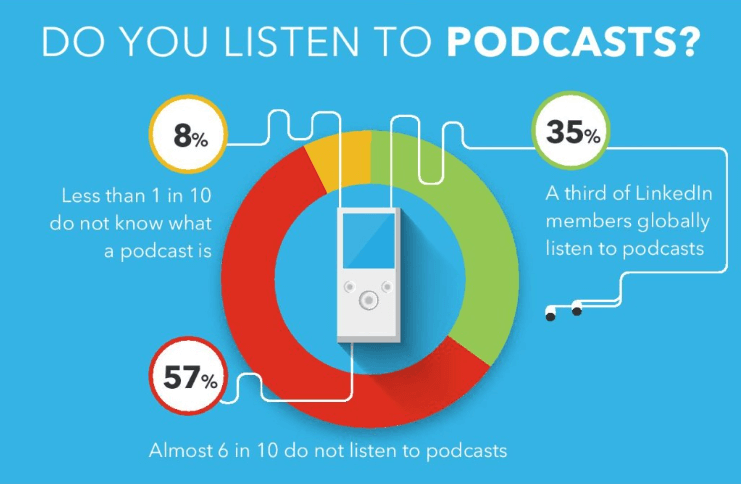
To make things interesting, you can invite guests who are experts in their own fields and reach a completely new set of audience. They’re also a swift turnaround format requiring little to no editing. You can also convert your podcasts into text within a few minutes using TTS (text-to-speech) software.
Starting a podcast can be intimidating, but here are a few tips to start:
- Create your own podcast by selecting topics that align with your business and target audience. Invest in some quality recording equipment, and software, and develop a content plan with a release schedule.
- Sign up for a podcast service if you don’t want to start from scratch. There are a ton of podcast hosting platforms such as Libsyn, Podbean, and Anchor that provide necessary tools for hosting, distribution, and analytics to efficiently manage and promote your podcast.
- Become a guest on another podcast if you don’t want to start your own podcast. This will allow you to tap into an existing audience base and show your expertise.
- Utilize podcast directories like Apple Podcasts, Spotify, and Google Podcasts to attract a larger number of podcast audiences. Optimizing your podcast title, description, and episode tags can also help improve visibility and engagement.
- Leverage social media and email marketing to further promote your podcast. You can easily find your target audience on LinkedIn, Twitter, and Facebook. Create engaging posts, and share snippets, or audiograms to attract and engage your audience.
- Collaborate with industry experts and influencers who have an audience that aligns with your own targeted audience. Collaborate by inviting them to your podcast or get invited to theirs. It works both ways and you can both expand your reach and attract new listeners.
Email Outreach
Email distribution is an underrated B2B content distribution method. It’s mainly because email marketing requires is not easy, but you have the advantage of knowing your audience and can send highly relevant content. From targeting the right audience to curating personalized email content, timing them properly, and following up, email marketing takes time and effort. Then again, the response rate drops significantly if you don’t personalize according to an analysis by Backlinko.
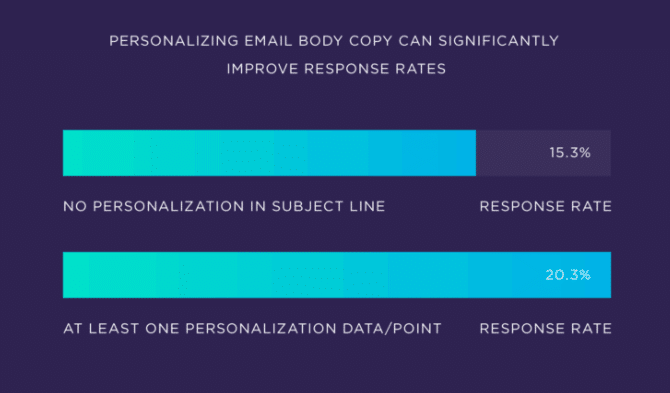
Here are a few tips to start distributing your B2B content via email:
- Build a targeted email list of businesses (and individuals) that will be interested in your content. Now, segment the list based on industry, job title, and previous engagement with your brand.
- Craft compelling and long subject lines to grab the recipient’s attention.
- Personalize the email copy to make it relevant and appealing. It helps build connections and encourages the recipient to engage with your content.
- Add a clear link, ideally a single link to the content piece that you are prompting. Make sure that it’s displayed prominently and encourages the recipient to take action.
- Utilize lead generation tools like Uplead to find the right audience for your B2B content.
Email Newsletter
Email newsletters are a simple and efficient way to distribute B2B content to the right audience. It provides a direct and consistent channel to regularly share valuable content, updates, industry insights, and promotions with your subscribers.
What makes email newsletters great is that you completely control the message, appearance, and frequency. Whether you send an email newsletter monthly or bi-weekly, it’s a great way to get extra eyes on your content.
Here’s a tip to get more clicks from your email newsletter: limit the number of links in each newsletter. Too many links overwhelm the readers, lead to confusion, and are often considered spam. Also, highlight the link in your email to stand out from the email body.
Video Content
Whether you’re scrolling Instagram or running a Google search, videos are everywhere. Wyzowl reports that nearly 87% of marketers feel that video content has a direct positive impact on sales and 96% agree that videos help users understand their product/service better.
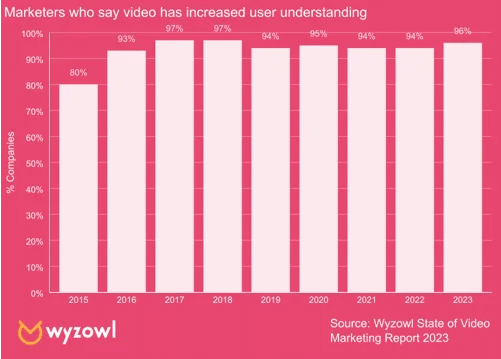
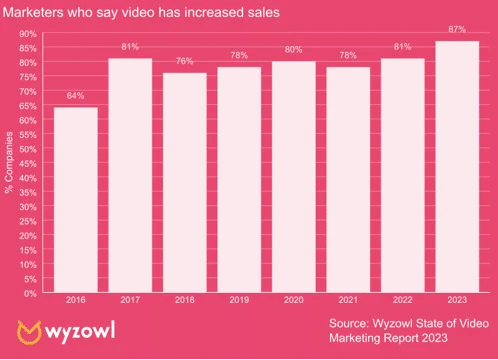
Now is the perfect time to make use of visual content to supercharge your B2B content marketing efforts. Live streaming and sharing videos (specifically shorts) on video-sharing platforms like YouTube can be a great way to distribute 2B content. Whether you’re a big brand or a small business, it’s simple, easy, and accessible to everyone. According to Google Consumer Insights, 68% of YouTube users watched YouTube to help make a purchase decision.
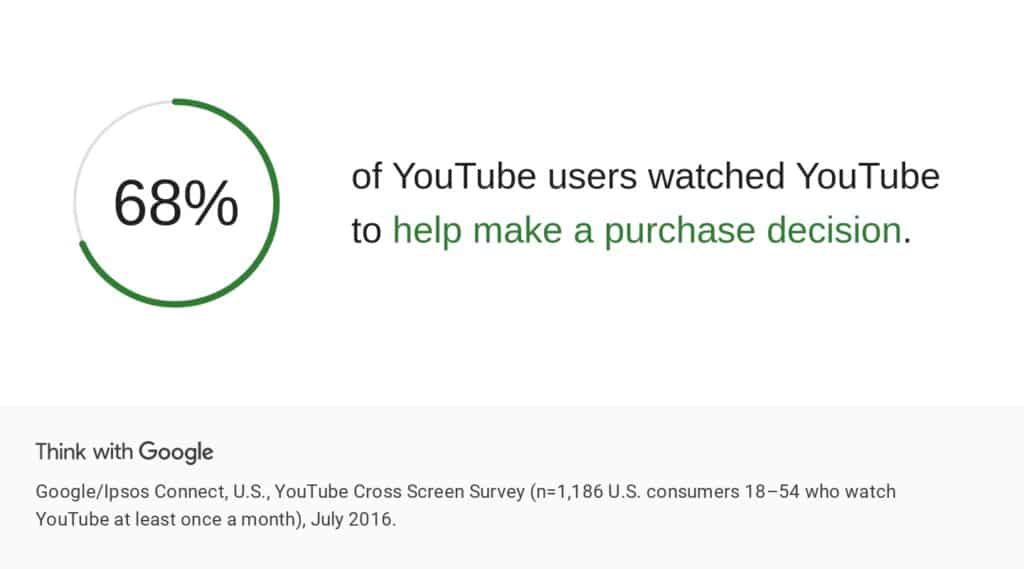
To make the most out of your video content, consider starting a YouTube channel and growing it over time. Here’s how you can organically grow your YouTube channel:
- Create high-quality videos that provide value to your audience.
- Invest in good audio and video equipment. Make sure that there’s proper lighting and presentation and deliver content that is educational yet entertaining.
- Optimize video titles, tags, and descriptions by using relevant keywords. Conduct keyword research to identify popular search terms related to your niche, and incorporate them strategically in your metadata.
- Add compelling thumbnails that accurately represent the content in your video.
- Upload regular content by creating a content plan and sticking to a proper upload schedule.
- Cross-promote on social media platforms like LinkedIn, Facebook, and Twitter. Share teasers, behind-the-scenes (BTS), or highlights to spark curiosity and encourage people to subscribe to your channel.
- Collaborate with other YouTubers and influencers to tap into their audience and gain exposure.
- Use YouTube Analytics to analyze your video performance, audience behavior, and traffic sources to identify trends and make informed decisions over time.
Press Release
Press release (PR) is an excellent way to get your content out there and reach a broader audience without doing the legwork. However, you shouldn’t overdo PR as a content distribution strategy. An in-depth report, white paper, analysis report, or study is great content for the press release. Publishers often mention reports and whitepapers in their articles, which can also help you get backlinks.
Webinars
B2B marketing usually involves convincing another business that you’re the expert in your field and what better way to do that than share your own knowledge and insights? Webinars offer a great opportunity to share knowledge on a particular subject while also letting people know what you do.
What makes webinars great is that they’re easy to arrange, cost-effective, and connect you to a broader audience. There’s no need to commute to arrange for people, but take a few hours out of your schedule to talk and establish trust and authority with your audience.
Conversely, getting an audience for your webinars can be actually challenging. Try prompting in advance to build interest and anticipation. Also, utilize social media, email newsletters, website banners, and other marketing channels to reach your target audience. Leave social proof by sharing testimonials, success stories, and positive feedback from previous attendees to increase trust and build authority. Lastly, offering incentives or partnering with complementary businesses/industry experts can also help expand your reach.
Search Engine Optimization (SEO)
Even with all the different paid marketing options, you can never underestimate the importance of SEO. It has the potential to help you reach those who have never even heard of your brand. However, SEO is a long game, but once it’s up and running, it persists long-term as long as you stay up-to-date.
According to a Hubspot research report, 75% of internet users never make it past the first page of search results.
Ranking higher on Google search results requires following SEO best practices in your content creation and distribution strategies. The foundation of SEO includes on-site optimization, keyword research, and link building. Implementing effective SEO practices can help you enhance your brand visibility, build a strong online presence, drive engagement, and convert.
Here are a few simple SEO best practices to help you improve your Google rankings:
- Research your keywords and use them organically throughout the content
- Include the main keyword earlier in the content and keywords in the URL
- Make your title tags and meta descriptions stand out from the crowd
- Write unique and engaging content that brings value to the readers.
- Add optimized images
- Optimize your website for mobiles and tablets.
- Make sure your website loads quickly
- Add internal links but do not underestimate the importance of great backlinks
- Publish long-form content
- Track your progress over time
Measure the Effectiveness of Your B2B Content Distribution Strategy
- Define Key Performance Indicators (KPIs) to determine metrics that align with your B2B content distribution goals such as website traffic, conversions, and lead generation. Clear KPIs provide a benchmark to measure success over time.
- Utilize analytics tools such as Google Analytics to gather data and insights on the performance of your content distribution channels and track relevant metrics.
- Assess individual channel performance to determine channels that are driving the most traffic, engagement, or conversions.
- Conduct A/B testing and experiment with various B2B content distribution strategies to determine one that yields the best results.
- Measure return on investment (ROI) to assess the financial impact of your content distribution efforts. Calculate the cost per acquisition, cost per lead, and return on ad spend to determine the effectiveness and efficiency of the strategy.
- Refine and Optimize Your content distribution strategy based on the insights gathered from various sources. To increase engagement and conversions, it’s important to implement improvements.
Getting Started with B2B Content Distribution
In B2B content marketing, there’s a lot of competition out there. To keep up, you need to just create good content, but one that stands out from the crowd. Next comes content distribution and the key to B2B content distribution is to spread your content across multiple formats and platforms. Don’t rely on a “routine” or regular channels, but think outside the box, experiment, and find what works best for you.
